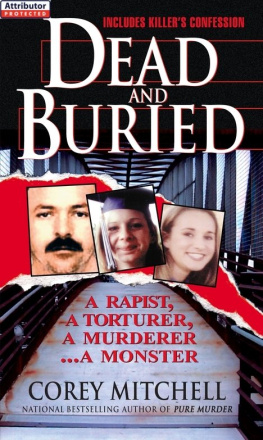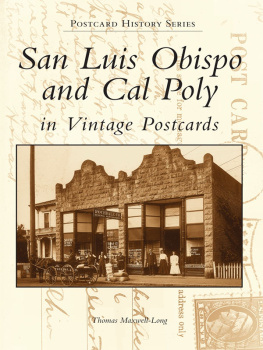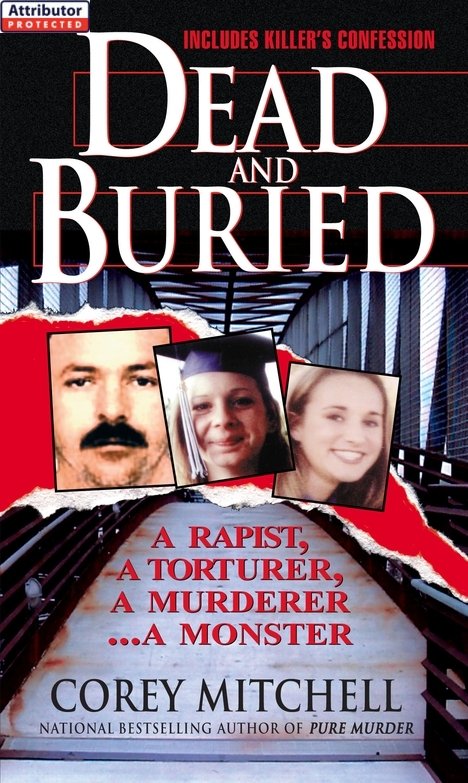ACKNOWLEDGMENTS
Thank you Lisa Valdez, Karen Spisak, Debbie Norrie, Heidi Kyzer, Ann Burum, Valerie Valine, John Trice, David Zaragoza, Larry Hobson, James Maguire III, Patricia Ashbaugh, Judge Barry LaBarbera, and Rex Krebs.
A special thank you to Aphrodite Jones. Also Paul Dinas and Karen Haas, former editors at Kensington, Michaela Hamilton, current editor-in-chief and resident angel who bent over in every way possible to help me deal with my grief and still complete this book, and copy editor Steffie Finnegan.
Thank you doctors Mark Goodman and Richard Ross. Also Paula Loring for providing the young mens grief support group. Thank you to the kind souls of that group who have shared their pain with me and softened mine along the way.
Thank you to all of my friends for being there for me after Lisas death, especially Peter Soria, Dennis McDougal, Dana Holliday, Chris Goldrup, Beverly Rubin-Goldrup, Erika Cavi-cante,Steve Brenner, and David Weiner. Also to Mike Sheppard, Knox Williams, Ray Seggern, David Schafer, Bob and Sandra Price, Kathryn Soria, Lynette Sheppard, Kelly Nugent, Phil Savoie, Mark McComb, Clint Stephen, Kevin and Shana Fowler, Trey and Missy Chase, Ricky Butler, Lupe Garcia, and Cindy Rapp. Thank you also to everyone who attended the funeral and/or sent cards. Your support was and is incalculable.
For my wonderful in-laws, Ted and Donna Popp. Lisa lives on through both of you. For Lynn, Leane, Ted Jr., Sara, Craig, Tres, Connie, Mike, Howard, Sonja, Ilona, Charlie, Sherrie, and Gene.
For my family, thank you for everything, before and after. My incredible parents, Don and Carol. My loving brothers Kyle and Darrin. Their fantastic wives Ramona and DeDe. For Ronnie and Madison Mitchell, Dick Yarbrough, Renee and Bill Runyan, Barbara, Mickey, and C.J. Rehak, Todd Solomon, and Jeremy Frey. Rest peacefully Grandma, Aunt Bessie, Marjorie, and Daddy Mitchell.
An extra-special thanks to Audra Burke for giving me a reasonto love life again.
Thank you, Lisa. I will love you eternally. You are still alive inside of me.
ONE
November 12, 1998
San Luis Obispo, California
Midnight
Rachel Lindsay Newhouse stumbled outside of the brightly lit restaurant onto the dark, chilly streets of San Luis Obispo. She was intoxicated and upset. She had a fight with her roommate Andrea West, and she was ready to go home. The only problem was she did not have her car. The girls rode togetherin Andreas car and Rachel was not about to ask her best friend for a ride. Not after their argument.
Rachel gathered her wits about her and stepped onto Nipomo Street, where the restaurant Tortilla Flats, or the Flats, as the locals liked to call it, is located. The Flats is a trendy Mexican-foodrestaurant that serves passable California Mexican cuisine, but whose main priorities are their top-shelf margaritas. That was the reason why Rachel was there in the first place. She was out celebrating with the Beta Theta Pi fraternity on this Thursday night and was ready to partake of the Sauza-tequila-and-limeconcoctions with no hassles. At twenty years of age, however, Rachel Newhouse was not old enough to drink legally in the state of California.
Neither was Andrea West, her roommate. It was because of that that Rachel found herself standing outside the restaurant and shivering instead of inside throwing back another margaritawith some cute guys from her college, Cal Poly.
Andrea, who was also only twenty, could not get into the bar side of the Flats. Both girls had employed the old smudged stamp routine to attempt to get inside. Some drinking establishments will mark the top of their customers hands with a black felt-tip marker or a black stamp, which is a signal to the doorman that they have already been inside and can reenter without hassle. Minors who want to circumventthe whole identification process at the door merely get someone who has legally gained entrance into the bar to offer up their stamp. The minor licks the top of his or her hand and rubs it against the marked customer, thus creating a reasonablefacsimile of the stamp.
At least that was the game plan.
Rachel Newhouses smudged stamp worked with no problem.She immediately bolted in and began to enjoy the festive atmosphere. Unfortunately for Andrea, the doorman stopped her and informed her that she would not be allowed in the bar side. She could only enter the restaurant side. Andrea stood by herself for the next hour, until she finally saw Rachel leave the bar side and head toward the rest room. Andrea met her at the door and began to complain. Soon the girls started to argue. Suddenly Rachel tore out of the restaurant, leaving Andreabehind. Once outside, Rachel waited shortly, hoping her friend would follow her. When Andrea did not appear, she took off.
As Rachel headed east on Nipomo Street, she began to shiver in the brisk Central California coastal air. Downtown San Luis Obispo is located only seventeen miles from the PacificOcean and decorated with such gorgeous beaches as Shell Beach, Pismo Beach, and Avila Beach. The usually picture-perfectsunny enclaves are harbingers for fog and cold weather in the wintertime and make for a chilly environment all around. Dressed only in black jeans and a dark blue silk shirt, Rachel was very cold. She was also nearly two miles away from her comfortable white wooden house located on the dead-end Gerda Street.
Rachel took a left onto Higuera Street and walked another half mile. At this time of night, it was not crowded. Had she walked out an hour earlier, she would have encountered severalstragglers from the weekly farmers market. The market is a gathering of hundreds of revelers who enjoy shopping for fruits and vegetables, reading informative brochures from political-mindedorganizations and several nonprofits groups, eating barbecue ribs and brisket sandwiches from an outdoor smoker, catching a live puppet show, and dancing to the strains of a new musical group every week. The internationallyknown gathering takes over this area of downtown for the evening and keeps it well populated. By the time Rachel left the Flats, the market had already dispersed. The streets were almost empty.
Rachel passed the Downtown Centre, the local minimall. She eventually came to Osos Street, where she took a right and headed east. Rachel walked along the sidewalk past severalwell-kept Victorian-style homes and past a few apartment complexes. She headed toward familiar territorythe JenniferStreet Bridge, an intriguing structure that had only gone up earlier that year. Its intentional rust-colored exterior loomed over the local train tracks like some kind of manic erector set, but it served a useful purposeespecially for Rachel. The bridge crossed over the railroad tracks in front of the restored Amtrak station and allowed pedestrians and bicycliststo cross over into the Jennifer Street neighborhood.
Rachels neighborhood.
Rachel had no reason to be scared as she walked home. She was almost to the halfway point to her three-bedroom house nestled in the southeastern section of the neighborhood.There was only one semilarge task for Rachel.
Crossing the Jennifer Street Bridge.
The Jennifer Street Bridge is an ominous structure, even in the daylight, with its hulking, rusted exterior and a maze of stairs, handicap ramps, and railings. Not to mention the poor lighting. When you climb the fifty-eight stairs to reach the height of a three-story building, you are thrust out onto the crossover that is encased with a firm crisscross wire system in every directionon both sides and overhead. The encasing allowsone to see the underlit train station, which is located approximately fifty yards to the northwest. The bridge itself, however, maintains a slight hovering glow due to the sporadic lights festooned along the lower portion of the railing.








